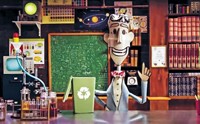Advertisement
Grab your lab coat. Let's get started
Welcome!
Welcome!
Create an account below to get 6 C&EN articles per month, receive newsletters and more - all free.
It seems this is your first time logging in online. Please enter the following information to continue.
As an ACS member you automatically get access to this site. All we need is few more details to create your reading experience.
Not you? Sign in with a different account.
Not you? Sign in with a different account.
ERROR 1
ERROR 1
ERROR 2
ERROR 2
ERROR 2
ERROR 2
ERROR 2
Password and Confirm password must match.
If you have an ACS member number, please enter it here so we can link this account to your membership. (optional)
ERROR 2
ACS values your privacy. By submitting your information, you are gaining access to C&EN and subscribing to our weekly newsletter. We use the information you provide to make your reading experience better, and we will never sell your data to third party members.
Environment
Editorial: The truth about plastics recycling
by Michael McCoy
November 27, 2023
| A version of this story appeared in
Volume 101, Issue 39
I want to believe that recycling is the answer to our plastic waste problem, and yet I’m constantly discouraged by reality.
I’ve been thinking about recycling after editing this week’s cover story, and about efforts to boost the recycling of polyethylene terephthalate (PET) via mechanical and chemical means (page 20). PET is the most recycled plastic in the US, but its 29% recycling rate is pretty pathetic.
The industry execs with whom C&EN senior correspondent Alex Tullo spoke for the article said the recycling infrastructure in place in the US can handle more PET and other plastics. What they need is for consumers to place more of it into recycling bins. Srinivasan Prabhushankar, chief technology officer at Indorama Ventures, put it plainly: “People should recycle their material. They should bring it back.”
But as one of those people, I know that getting my fellow Americans to bring it back—and follow the complex and often ambiguous rules for recycling and composting—isn’t so easy.
Case in point: During C&EN’s annual staff meeting last month at ACS headquarters, we had two catered lunches in a meeting room that was equipped with separate containers for waste, recyclables, and compostables. C&EN’s reporters, editors, and creative team members are some of the most conscientious people I know, but when I inspected the three containers, I saw little adherence to the rules.
Paper-based plates were tossed roughly evenly between the trash and composting containers when they all should have been in the latter. And the forks and spoons were mostly in the waste bin because hardly anyone noticed they were made from a compostable material, polylactic acid. Then again, why would anyone notice? You had to squint at barely discernible text on the underside of the utensils to find a description of what they were composed of.
Things are no better on the home front. I live near Brooklyn’s Park Slope neighborhood, famous for its well-heeled do-gooders. Stuck to the sides of the recycling containers in my building’s courtyard are placards with the requisite dos and don’ts. But when I lift the lid, I see all manner of illicit material, including plastic bags and polystyrene foam.
I die a little inside whenever I peer into the laundry room’s trash can and see that someone has put a big, fat, high-density polyethylene laundry detergent jug there rather than in the recycling bin outside. Sometimes I fish it out. Sometimes I don’t.
And I face a moral crisis every time my wife or I finish a product in the kitchen or bathroom. Yes, the orange juice container is definitely PET and belongs in the recycling bin. But what about the container’s cap, which carries no information about its provenance? And after how much rinsing of a bottle of hair conditioner have I crossed the line where the water consumed offsets the environmental benefit of recycling it?
At least I live in a state that levies a deposit on beverage bottles and cans, which Tullo’s article says is good for recycling. The reality check is that none of the grocery stores around me actually take bottles back as they are supposed to—and it’s not really worth my while anyway.
So in our neighborhood, and in much of New York City, we are visited on the eve of trash day by a community of “canners” who go through the bags of recyclables and remove the plastic, aluminum, and glass beverage containers that are eligible for a 5-cent redemption. They are quick and thorough and always tie the bags back up when they are done.
It’s unfortunate that collecting bottles and cans for a nickel apiece is how some folks need to make a living. But by taking them from city trash cans and from the sidewalk in front of my building, they are making recycling work. Perhaps the answer to our plastic waste problem lies less in public responsibility and more in incentives based on cold, hard cash.
Views expressed on this page are those of the author and not necessarily those of ACS.



Join the conversation
Contact the reporter
Submit a Letter to the Editor for publication
Engage with us on Twitter